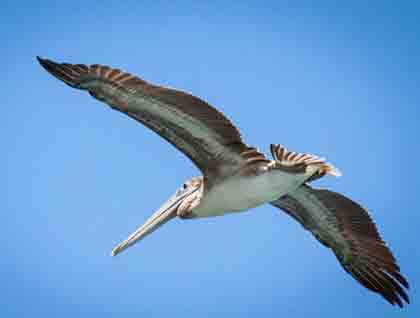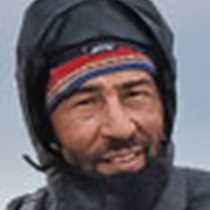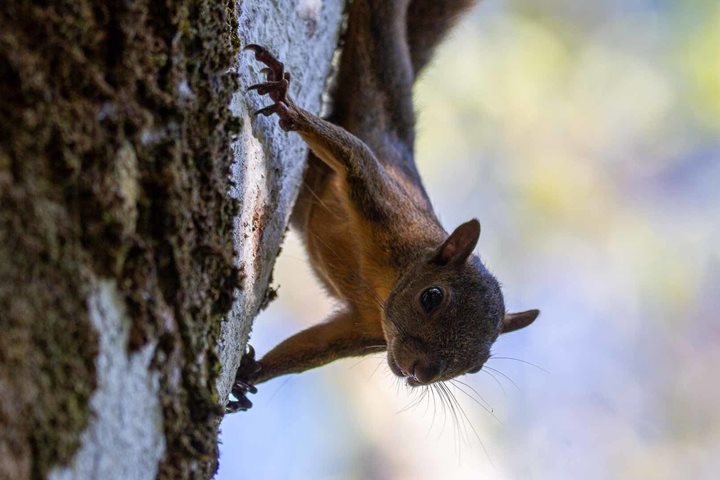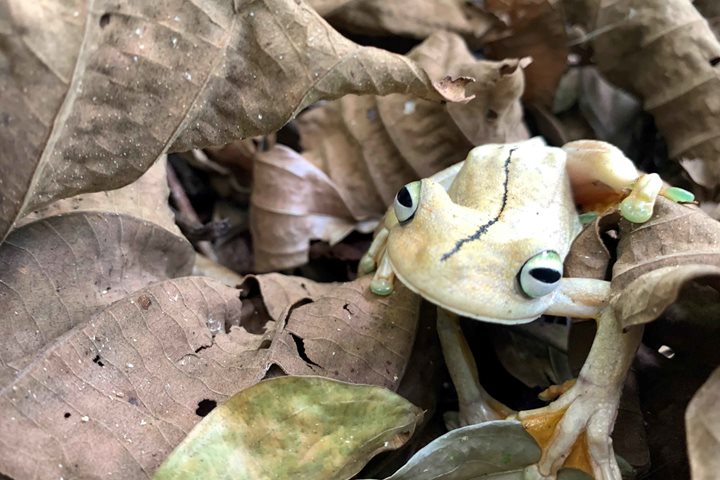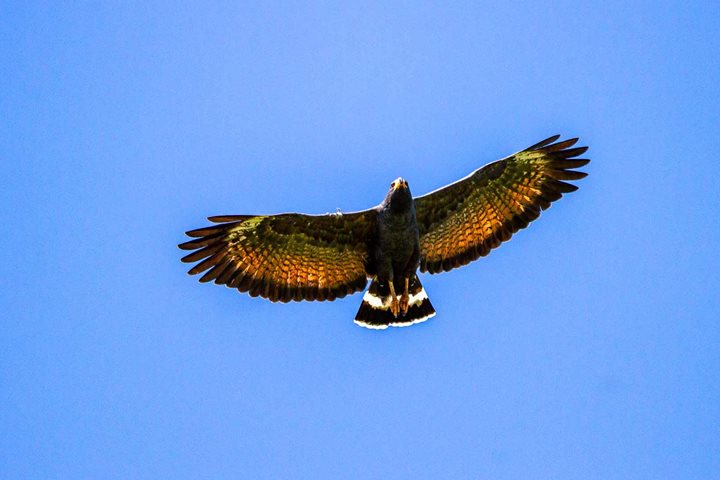Early this morning we arrived at the Gulf of Panama, to the islands of Otoque, Bona and Estiba for our morning activities, that consisted of guided zodiac rides around the Island of Bona. Here in these islands we have an interesting upwelling process. Strong trade winds coming mostly from the northeast easily cross through the very narrow isthmus of Panama; once on the Pacific Ocean, these winds push the warm surface water away, and then these waters are replaced by deeper, nutrient-rich cold waters from the bottom.
Bona Island in particular is a safe haven for birds roosting and nesting on the vegetation adjacent to the ocean. We can easily recognize here different bird neighborhoods, without much mingling among the different species. For example, we have the brown boobies that prefer nesting directly on the ground of the rocky edges to the ocean surrounded with cacti; brown pelicans like to roost and nest on the smaller trees following the ocean’s edge; and the magnificent frigatebirds, with their humongous wingspan and insignificant legs and feet, are more inclined to roost on the higher vegetation on the cliffs. From a distance the small Island looks more like a beehive with all these birds actively swirling over it. This is truly a very active place: chicks need to be fed, and boobies and pelicans are always hard at work, commuting constantly to the nearby oceanic supermarket. On the other hand, the frigatebirds are almost always on the wing, keeping a close eye on any bird that comes back with a full crop that could be a potential victim for them to harass and mob, to make it release its catch.
Among these birds we found others, like non-breeding blue-footed boobies and nocturnal yellow-crowned night herons; neotropical cormorants at the water’s edge minding their own business; turkey vultures in charge of cleaning and taking away the dead bodies of the many birds that don’t make it; and an occasional migratory peregrine falcon that will attack and kill smaller birds, sometimes even boobies that are about their own size.
After all this morning activity we proceeded to reposition National Geographic Sea Lion to our official rendezvous with the Panama Canal authorities at Flamenco Island for the routine inspection before crossing through the canal. From Flamenco, while surrounded by a large number of ships of different types and sizes, we had great views of the skyline of the modern city of Panama, with all its brand-new skyscrapers and billboards. Then we finally got to the canal itself, first under the sort of grand entrance gate that constitutes the Bridge of the Americas, and through the first set of locks. We felt like we were back in time to the era when it was built, because it is fundamentally the same canal, with some small improvements. So we had the privilege last night to experience an important part of modern human history.

